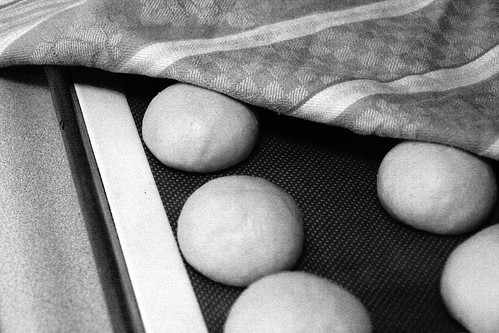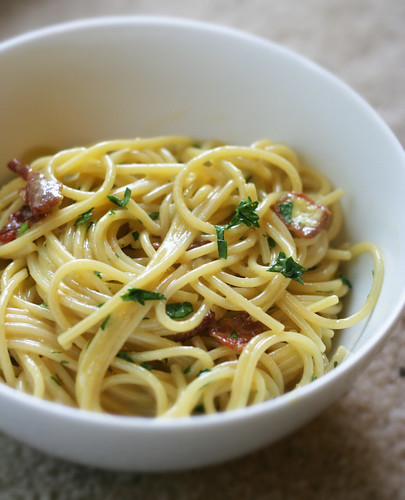I have been reading a bread blog for a while now called
The Fresh Loaf, and while I don't participate (shame on me), I do enjoy the sharing of bread recipes, experiences, and feedback that exists on the site.
I picked up the recipe for these rolls submitted by Eli on the Fresh Loaf
post and gave them a try. They are wonderful, tasty, and truly easy rolls to make.
I made a few substitutions, so below is my version of the recipe.
Yeast Rollsadapted from
The Fresh Loaf250 g bread flour
244 g AP flour
65 g sugar
5 g instant dry yeast
5 g salt
50 g egg, beaten (I think that is one egg.)
195 g soy milk
50 g vegetable shortening
50 g water
Combine the flours, yeast, and sugar in a bowl, add water. This mixture is very, very dry. Its ok. Let it sit for as long as it takes you to do the next part.
Beat egg, shortening, and salt, with the milk. The shortening did not totally disperse for me, but stayed as lumps. Its ok. Add the wet mixture to the dry mixture and stir to combine. It should now look like a wet, sticky dough.
Turn out onto a floured counter and knead for 12-13 minutes. The dough will be smooth, but tacky. Place in oiled bowl and let rise ~2 hours.
Once after 2 hours, the dough should have doubled in volume. If it hasn't, let it sit a bit longer, or proceed, your choice. If you have come this far, you must have a kitchen scale, so using the scale, cut the dough into 1.75-2.00 oz (50-60 g) pieces and form into balls. Let the balls proof (as in above photo) for 1-2 hours under a towel. The dough is ready when you poke a dough ball and the indentation slowly comes about half way back out.
Bake in a 375ºF oven for 10-12 minutes, or until the tops get a nice brown. Don't pull them out too early; your patience will be rewarded with a nice crunchy crust and a fluffy interior.
Wait until the rolls have cooled, about 30 minutes, to get the optimal texture. I couldn't wait (I ate 5 straight from the oven) and wish I had.





